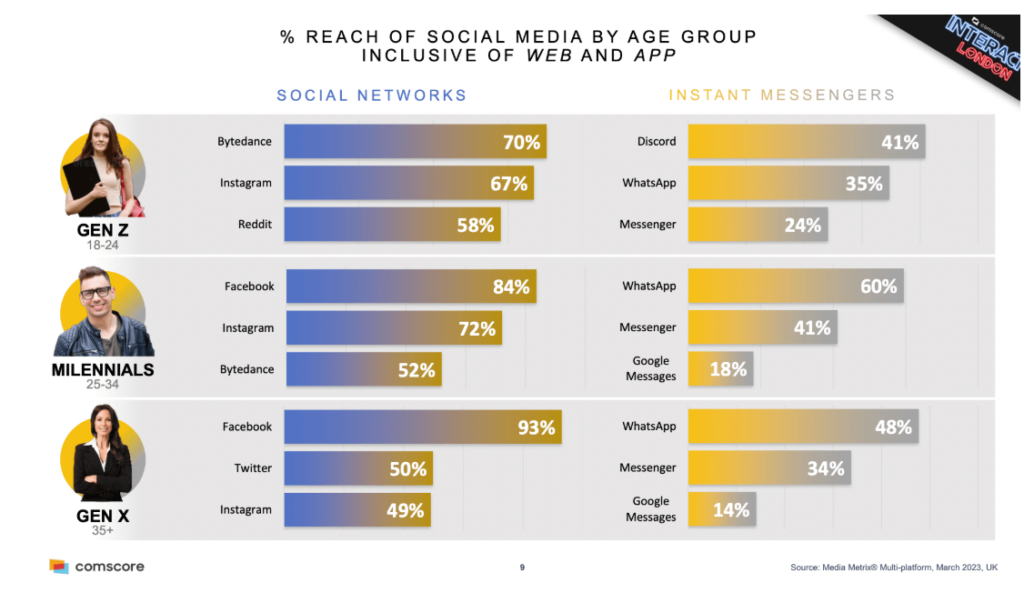Using social media to build your brand isn’t easy. For many businesses, it’s just too difficult to grasp, and they run into any number of challenges.
Some businesses may not know what a brand-building strategy should consist of, and this hinders the ability to work social media consistently into your strategy.
Some businesses neglect to maintain consistency across their entire integrated strategy. Thus, their social media channels look almost like they belong to a different company.
Table of Contents
Branding First
If you don’t understand the fundamentals of branding and how to use social media to build awareness for your brand, you’ll struggle to compete against those who truly get it.
Branding shapes how people see your business on social media. A strong brand builds trust and shows consistency across posts, profiles, and ads. It influences everything—your tone, visuals, and messaging—helping you stand out in crowded feeds.
If your audience recognizes your brand quickly, they’re more likely to engage or follow. Without clear branding, your content can feel scattered, making it harder to connect with people. Keep it simple, memorable, and aligned with your values.
To help you leverage the power of social media in building your brand, let’s take a look at a few social media branding mistakes to avoid at all costs.
1. Only Talking About Yourself and Your Brand
A lot of businesses make the mistake of using their social media solely to market products or make announcements about their business. People don’t really care about what you’re doing if it’s not benefiting them in some way.
So, you have to make sure that you focus on providing value first and foremost. People should be feeling like they’re getting something with every post.
While you should be speaking about your products and services, that should really only be a small percentage of what you talk about on social media.
You can use your channels to speak about things like upcoming product launches, but you should mostly be using the page to directly engage and entertain your audience, give help, or give back.
The more value you add and problems you solve with your social media posts, the more likely it is that you’ll build lasting relationships with your followers. Hence, keep them coming back for more.
As the relationships develop, your target audience will start forming a positive connection and with your brand, which will boost engagement when you do have something to sell.
2. Not Defining Your Brand Image and Message
If you don’t have a clear brand image and message, you can’t expect your audience to resonate with it. You need to truly understand who your brand is and the value you add to the market. This message and value should be conveyed in both the brand design and image as well as the message you send.
The issue is that many don’t understand how to build a brand to begin with. If this is the boat your business is in, I suggest checking out a brand design agency to help get you moving in the right direction.
The key is to build a well-defined brand that will transfer well across your entire digital presence, no matter what platform your customers and prospective customers land on.
As you build out your brand image, you’ll need to be sure to adjust your strategy. Hence, depending on which social media outlet you want to use.
While the brand image and message should be consistent, each channel has different ways of expressing your brand. And each as well as different levels of formality.
Take a look at this example of a LinkedIn presence for Sephora vs. the same brand’s presence on Twitter. You can see that the elements presented on each channel are different.
The brand’s display has consistencies across all channels. As you can see that the layout and other elements call for some differentiation.
Sephora on LinkedIn. The brand displays more of a professional look here. Thus it feels as they are targeting prospective talent to hire for job openings.

Sephora on X Twitter – The brand is much more lively here. Since this channel is used to engage with fans and customers and generate conversation.

3. Casting Too Wide of a Net
Another common mistake brands make is trying to be on every platform. You don’t necessarily have to be on Instagram, X, LinkedIn, TikTok, Pinterest, YouTube, and the list goes on. And you certainly don’t have to spend equal time on each channel you are on.
You need to know where you perform the best and where your audience engages with you the most. As well as the accepted frequency of posting on each channel.
Once you’ve found a few winners, concentrate all of your efforts there. Only when you’re successful can you start trying your hand at other platforms.
You can start by understanding who uses each social media channel. This can be as simple as conducting secondary research online. However, you can do your own original research through surveys, analytics, and other tactics.
For example, if your products are aimed at a younger audience, you can see how that demographic’s social media preferences have changed through the years.

Your best bet would be to instead focus on Snapchat or Instagram, even TikTok in the social media space.
4. Not Tracking Results of Your Social Media Brand Building
If you want to know where to concentrate your social media efforts, you need to have your metrics down. Learn how to use analytics tools to track engagement and see which of your posts are translating to conversions among other things.
You might have a post that receives tons of engagement. However, you notice that you hardly got any sales from it.
On the other hand, a smaller post or video could bring you tons of sales. But it may come with only a fraction of the views or clicks.
As you uncover these types of insights, dig in a bit and see what you can determine about why a particular post results in more business.
As you begin to dig in, you’ll start to develop an understanding of which format sells and what type of content you should be concentrating on.
Conclusion: Social Media Brand Building
These are only a few examples of mistakes many businesses make when trying to build their brand on social media. Make sure not to commit these mistakes yourself, and look at what others are doing right for inspiration.
Test some things out, and be sure to take notes so you can make adjustments as necessary. Be consistent across your channels, but understand that each channel does require a particular type of focus.
You aren’t going to be successful if you try to be everywhere for everyone. Be sure to understand where your audience likes to hang out online. Then, make sure you focus your efforts on those areas while maintaining a level of brand consistency.
And don’t forget to measure the results. You should never be 100% happy with the results. If you settle, you may miss out on some amazing opportunities. No matter how great your results might appear on the surface, there’s always room for improvement.
FAQs: Avoiding Social Media Brand Building Mistakes
When your branding (logos, tone, colors) is inconsistent, it confuses your audience. People may struggle to trust or recognize your brand, which weakens loyalty and reduces engagement.
A large follower count looks good but doesn’t guarantee sales or brand loyalty. Engagement (comments, shares, likes) shows people actively care about your content. Prioritize quality interactions over numbers.
Ignoring negative comments signals you don’t care about customer concerns. Addressing criticism shows accountability and builds trust. Responding professionally can even turn critics into advocates.
Without reviewing analytics, you won’t know what’s working or where you’re failing. Tools like engagement stats or reach reports help you refine your strategy and deliver content your audience wants.
Yes, constant selling can push people away. Social media is about building relationships. Balancing promotional posts with useful, entertaining, or relatable content is key to keeping followers engaged.
- 4 Social Media Brand Building Mistakes Businesses Make - January 29, 2025
- What’s The Big Secret to Successful Affiliate Marketing? - September 1, 2024
- Tools For Affiliate Marketers That Are Useful Working from Home - July 28, 2024




Hello Anthony and Lisa,
Social Media definitely plays a great and vital role in Brand building. Social media sites are now part of everybody’s lives and companies and marketers simply don’t ignore that. Thanks for sharing this detailed guide on social media brand building.
Regards,
Vishwajeet Kumar
Thanks for reading, Vishwajeet. I appreciate it! Yes, social media really needs to be engrained in a company’s marketing strategy. It’s hugely valuable in amplifying your message and driving recognition for your brand. I wrote a piece recently about using social media to amplify the reach of your content, and I think it adds a lot of value to this post. https://www.anthonygaenzle.com/social-media-is-an-amplifier/
Social media seems a bit touchy these days. Something that was politically correct yesterday isn’t today and you can easily find yourself banned or censored. What advice do you have for these very real scenarios?
Hi Yolanda, Welcome to Inspire To Thrive. I agree it can be touchy. I try to avoid those situations as much as possible on social media on my business accounts. Keep it to business and keep it positive and inspiring.
Hi, Yolanda! I agree completely with Lisa on this one. Social media has become a combative place, and it’s best to stay out of confrontational conversations. For business accounts, you should never get involved in controversial topics, unless, of course, you run a blog that focuses on controversial topics. It’s a weird space online these days, and it’s best to think first about the impact of your personal brand before responding. If it could get your account suspended, it’s not worth it.